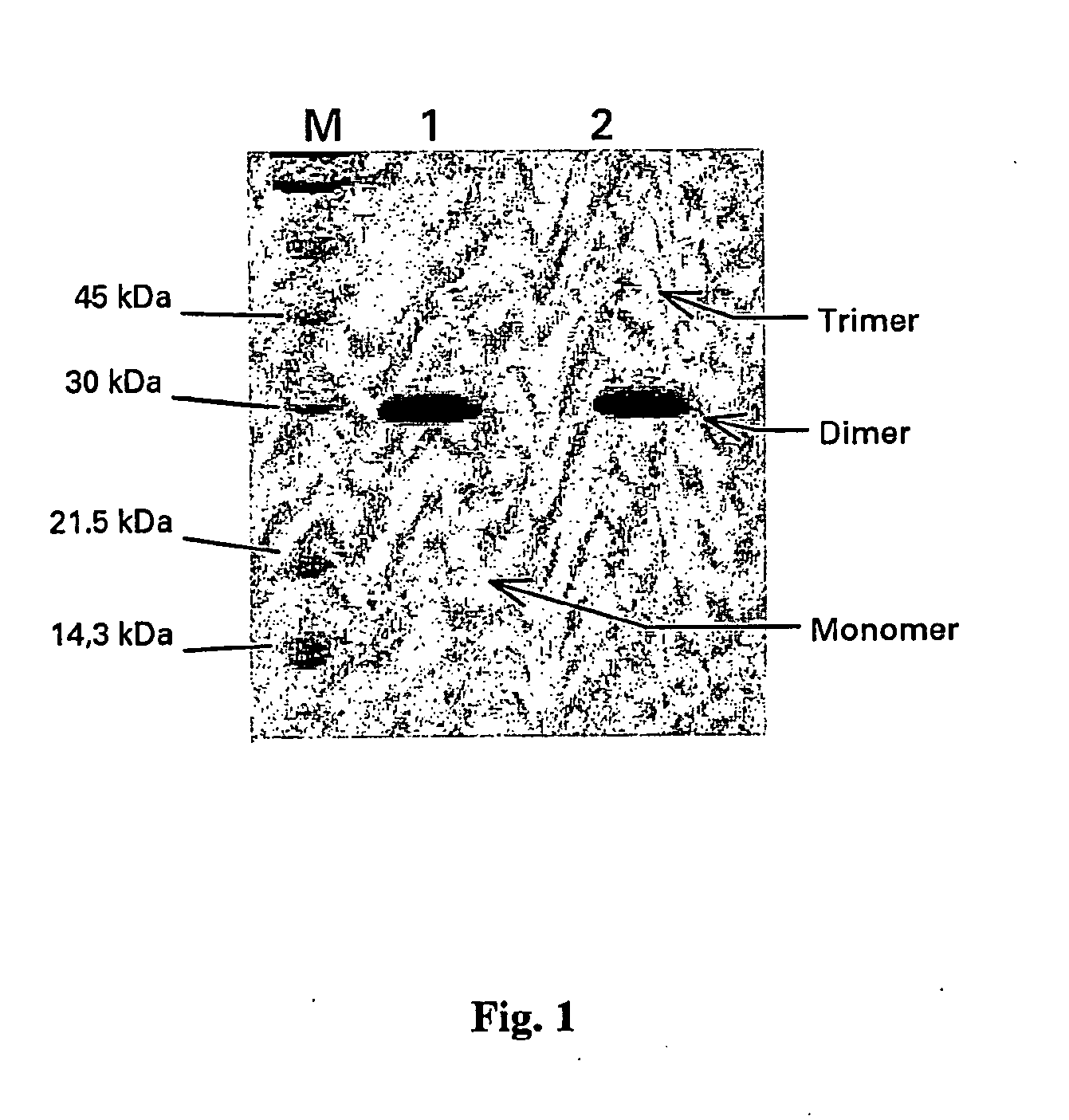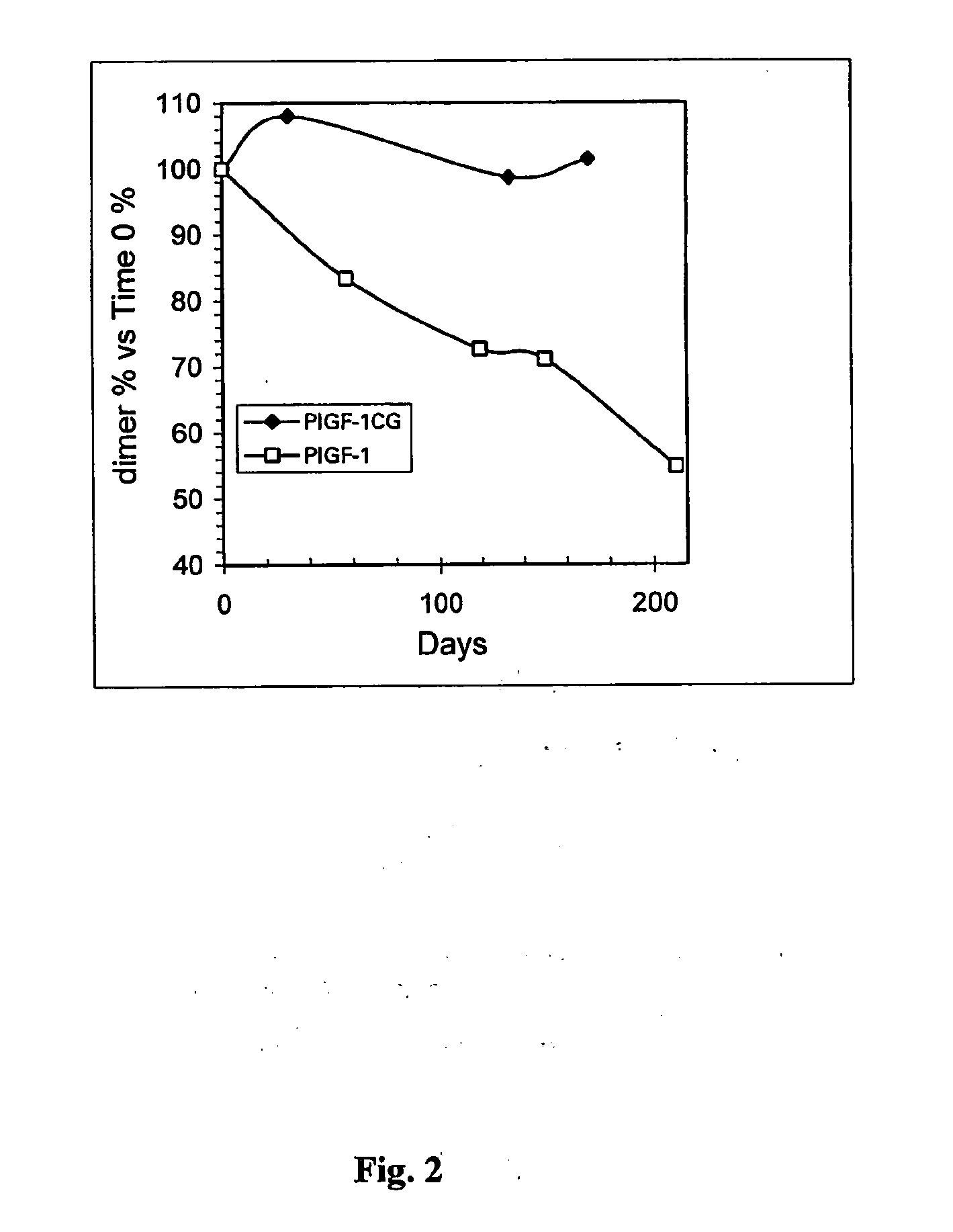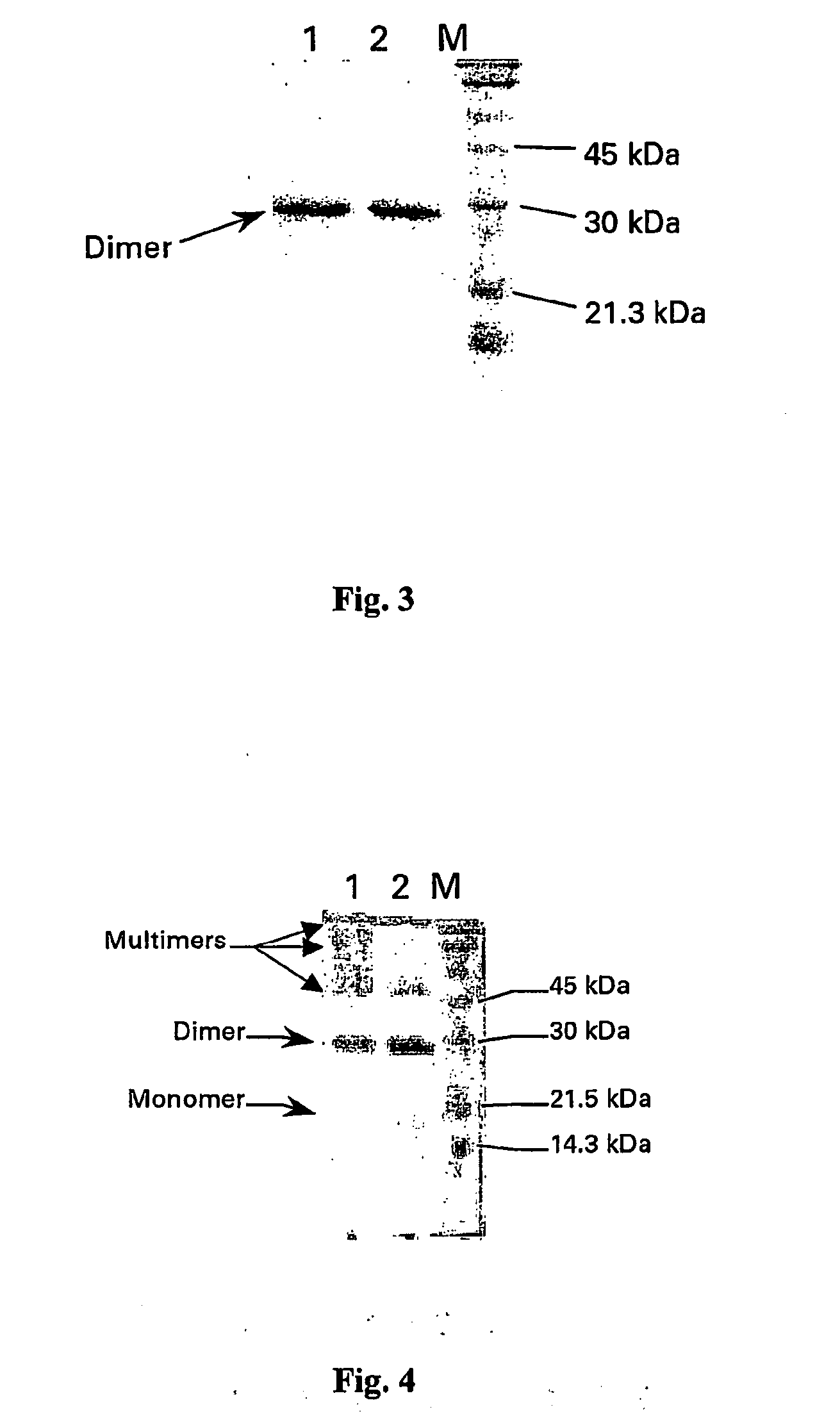Muteins of placental growth factor type 1, preparation method and application thereof
a technology of placental growth factor and mutein, applied in the field of mute, can solve the problem of inability to generate multimerisation products, and achieve the effect of high stability
- Summary
- Abstract
- Description
- Claims
- Application Information
AI Technical Summary
Benefits of technology
Problems solved by technology
Method used
Image
Examples
example 1
Synthesis of the cDNA Encoding the Mutein.
[0094] The PlGF-1 MUTEIN, which we have called PlGF-1CG, was generated by mutation of the thymidine (T) No 382 (sequence SEQ ID NO:1) into guanidine (G). In this way the TGC codon, nucleotides 382-384 of the sequence indicated above, encoding a cysteine was transformed into GGC encoding a glycine.
[0095] From an amino acid point of view the cysteine mutated into glycine in the mutein PlGF-1CG is in position 125 of the sequence SEQ ID NO:2.
[0096] For synthesis of the DNA encoding the mutein, the PCR (polymerase chain reaction) technique was applied. The expression vector pET3PLGF1 encoding the protein methionyl PlGF-1 without signal peptide (EP-A-0 550 519) was used as a template for the PCR. In practice this is the wild type PLGF-1 protein without the first 18 amino acids (signal peptide) and with a methionine in position 1 (N-terminal) (SEQ ID NO:2). The oligonucleotides used as primers are the following: [0097] oligo1 (forward primer) h...
example 2
Production, Extraction and Purification of the Mutein PLGF-1CG
[0102] The micro-organism [Bl21(DE3)pLysS PLGF-1CG] has been cultivated in a fermenter using as a culture medium the solution SBM comprising:
Solution A (per 1 litre)Bacto yeast extract(Difco) 34 gAmmonium sulphate 2.5 gGlycerol 100 mlH20q.s. to: 900 mlSolution B (10 X) (per 100 ml)KH2PO4 1.7 gK2HPO4—3H2O 20 gorK2HPO415.26 gH20q.s. to: 100 ml
[0103] Solutions A and B are mixed in sterile form at the time of use.
[0104] Expression is induced by means of IPTG (isopropyl-β-D-thiogalactopyranoside) 1 mM.
[0105] Fermentation is preceded by a pre-inoculation step. A tube of lyophilised micro-organism is taken and suspended in 1 ml of SBM+100 μg / ml Ampicillin+34 μg / ml chloramphenicol, the suspension is further diluted and incubated at 37° C. for one night. After dilution in the same SBM solution additioned with Ampicillin and chloramphenicol, the pre-inoculate is divided into 4 Erlenmeyer flasks.
[0106] The content of each...
example 3
I Stability Study on the PLGF-1CG Mutein Carrying the Substitution Cys 125 Gly
[0125] The PlGF-1CG mutein was solubilised in saline solution at theoretical concentrations of 20, 5 and 1 mg / ml. Simultaneously the PlGF-1 protein (without mutation) was also solubilised in saline solution at a concentration of 20 mg / ml. All the samples were stored in the refrigerator (4-8° C.) for up to 40 days.
[0126] The actual concentration was determined by calculating the average of the values obtained from 3 suitable independent dilutions. The method used was spectrophotometry using a wavelength of 280 nm and knowing that an absorbency of 1 OD (optical density), measured a cuvette with a standard 1 cm optical path, corresponds to a concentration of PlGF-1 and PlGF-1CG equivalent to 1 mg / ml. During the days following the start of the experiment (time 0 on table 1), before carrying out the suitable dilutions to determine concentration, an aliquot of each sample was centrifuged at 13,000 rpm in an AL...
PUM
| Property | Measurement | Unit |
|---|---|---|
| optical density | aaaaa | aaaaa |
| concentration | aaaaa | aaaaa |
| concentration | aaaaa | aaaaa |
Abstract
Description
Claims
Application Information
 Login to View More
Login to View More - R&D
- Intellectual Property
- Life Sciences
- Materials
- Tech Scout
- Unparalleled Data Quality
- Higher Quality Content
- 60% Fewer Hallucinations
Browse by: Latest US Patents, China's latest patents, Technical Efficacy Thesaurus, Application Domain, Technology Topic, Popular Technical Reports.
© 2025 PatSnap. All rights reserved.Legal|Privacy policy|Modern Slavery Act Transparency Statement|Sitemap|About US| Contact US: help@patsnap.com



